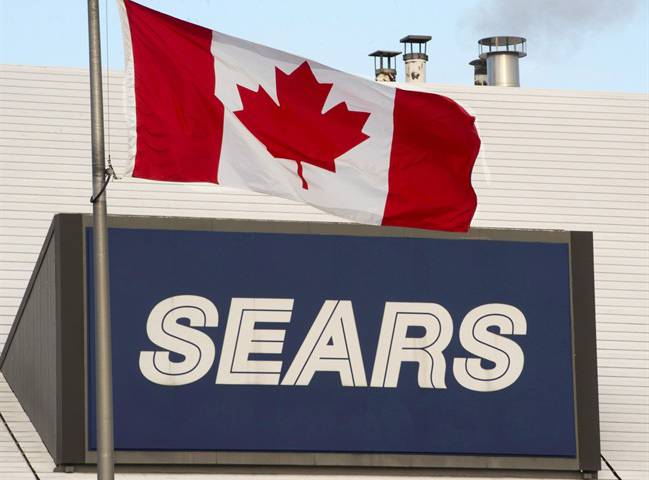Troubled retailer Sears Canada is seeking court permission to suspend some payments to its employee pension plan and other retirement benefits as it undergoes restructuring after filing for creditor protection.
“Sears retirees have been raising the alarm about the financial collapse of Sears Canada with the company and the Ontario government for over five years. The company is now insolvent, the pension plan is underfunded and retirees are exposed to pension and benefit losses,” Andrew Hatnay of Koskie Minsky, the firm appointed as representative counsel for Sears Canada retirees, told Global News via email.
The retailer’s motion, if granted, will likely result in a reduction to the income that Sears retirees will receive from the company’s defined-benefit pension plan, said Ronald Davis, associate professor of law at the University of British Columbia and a former associate at Koskie Minsky.
Defined-benefit pension plans promise members a certain level of lifetime retirement income that’s usually based on their salary level and years of service. Sears’ defined-benefit pension plan was underfunded, and the company had been paying $3.7 million a month to address that shortfall.
Sears, which sought credit protection on June 22, had mentioned in previous filings that it would ask the courts to be allowed to suspend those payments, as well as contributions to its retiree health and life insurance benefits.
“This isn’t unexpected, it’s unfortunate,” said David Vaughan, an employment lawyer at Samfiru Tumarkin, a Toronto-based firm.
Under Canadian law, retirees in these situations are treated like unsecured creditors, he noted. Their claims rank after those of secured creditors, like banks.
The court faces a “balancing act between the frustrated expectations of people who have worked there for years and closing down all of Sears and preventing anyone [there] from having jobs,” said Howard Levitt, senior partner at Levitt, a Toronto employment and labour law firm.
But Sears retirees are in a better position than those among the company’s employees who stand to lose their jobs and receive no severance, Levitt added.
The company has said it was planning to let go 2,900 of its 17,000 employees and would not be able to pay for severance packages due to cash constrains.
Retirees, on the other hand, still stand to receive something. Contributions already made to the company’s defined-benefits plan are held separately and are unaffected by insolvency proceedings, Davis said.
Sears had long ago closed its defined-benefit plan, maintaining a defined-contribution pension plan for new employees.
In defined-contribution plans, individuals and employers generally contribute a set percentage of the individual’s salary. The amount of retirement income depends on contribution levels and returns on investment and isn’t guaranteed for life.
Defined-contribution plans are typically less generous. But they aren’t affected by insolvency proceedings except if a company terminates the plan, said Davis.
Sears case speaks to the struggles of employers to keep up with defined-benefit pension plans
Employers have been phasing out defined-benefit pension plans, which have become increasingly unaffordable as employees live longer post retirement and investments yield low returns amid low interest rates.
But many of the plans that still exist are underfunded, with contributions falling short of guaranteeing the retirement income that employees were promised, said Davis.
Several provincial governments have required employers to pay special payments to their pension plans in order to fill the gap — much like Sears was doing, he added.
But under federal law such payments are treated as unsecured claims, according to Davis.
There is “concern” about underfunded defined-benefit plans and what happens when employers file for insolvency, he told Global News.

